Animator Breakdown: “Get Rich Quick Porky” Redux

This article was published on my Patreon page in January 2023, with slight modifications in the text. Since the series is going to the start of Bob Clampett’s directorial career, and for readers to keep abreast of the important details, here’s a link that presents the animator breakdown columns of Clampett’s first season of B&W Looney Tunes in production order. (Animator breakdown columns detailing Rover’s Rival, Porky’s Poppa, and Porky’s Five & Ten will follow within the next few weeks.)
LT-3: Porky’s Badtime Story
LT-4: Get Rich Quick Porky
LT-5: Rover’s Rival
LT-6: Porky’s Hero Agency
LT-7: Porky’s Poppa
LT-8: What Price Porky
LT-9: Porky’s Five & Ten
LT-10: Injun Trouble (also includes its 1945 remake, Wagon Heels)
LT-11: Porky’s Party
LT-12: Porky & Daffy
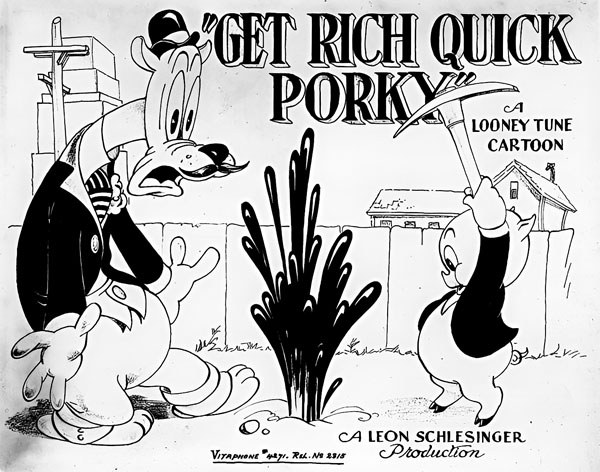
In his 1969 interview with Michael Barrier and Milt Gray, Bob Clampett attributed the writing of Porky’s Badtime Story, his first cartoon for Leon Schlesinger’s studio as a director, to Cal Howard. After the animation of Badtime Story ended in late April 1937, production began on “The Oily Bird Gets Porky,” which Clampett chose to write himself. Ub Iwerks drew a few character layouts for Badtime at his Beverly Hills studio, where Clampett and several Schlesinger animators were stationed. After Ub left, Clampett was appointed supervisor and finished the layouts on his first cartoon. The production draft for Clampett’s second Looney Tune, entitled Get Rich Quick Porky, indicates this production to be the first to be produced by the “Katz unit.” Clampett and his animators relocated to the first floor of the building that housed Leon Schlesinger’s animation studio in 1933. Katz ran the unit as a separate company, away from the main lot where Leon’s building was situated.
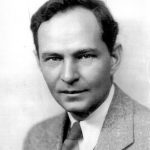
Earle Hodgins
With Clampett’s second cartoon, Chuck Jones was responsible for the unit’s character layouts. Bob recalled how he and Jones worked together on their early black-and-white Looney Tunes: “Many times, he would take my story sketch, and make an enlargement, show it to me, I would make some suggestions on that, or a little sketch over it, and then he would make a final layout sketch with a better complete drawing of it. I would go through the [story]board mentally with a stopwatch and get the total picture timing, and you go through it scene by scene, and you go through eventually and break it down into every little movement.” Credited only as an animator on Get Rich and subsequent Clampett cartoons, Jones claimed that he and Clampett acted as co-directors; animators Norm McCabe and Jerry Hathcock also recalled the two as a directorial team.

On May 10, 1937, Clampett disbursed the first scenes to his animators, with the same mixture of Schlesinger and Iwerks artists. Norm McCabe, an animator in Frank Tashlin’s unit at Schlesinger’s, was shifted to Clampett’s unit, credited for a few scenes in Get Rich. The production draft reveals that “Tom”—now confirmed as Tom Massey—shares four scenes with Norm McCabe in the film. Since “Tom” is credited solo for character animation in Badtime and only given joint credit with McCabe in Get Rich, it’s possible that Massey left Schlesinger’s and McCabe finished his scenes. However, the artist listed as “Gordon” still can’t be identified as of this writing. The last of the animation work ended on June 2. (A scribbled footage count, embedded on the production draft, mentions each animator, except for Norm McCabe and “Gordon,” suggesting both were assigned their scenes late in production; scene 25 in the draft lists “Tom + Norm,” written over a partially erased “Tom.”)

The secondary storyline of Get Rich involves a hound trying to bury a bone in the oil field, much to his frustration, unquestionably influenced by Disney’s Pluto the Pup. Scenes 20 and 20A, credited to Bill Hamner, evoke the dog’s complications in digging a pit to drop his bone, only to receive oil spurts at each attempt. Just as soon as the hound thinks he’s sealed it, four little oil gushes shoot up and suspend him in the air. Chuck’s possible role as a co-director in the Clampett unit might have helped guide Hamner’s personality-based sequence through Jones’ character layouts, in its poses and timing.
 In an extended sequence animated by Chuck, a small gopher emerges from a hole in the ground and, like a magician, takes the dog’s bone to demonstrate sleight-of-hand tricks, making the bone appear and disappear. As a young boy, Clampett performed a magic act in school; a surviving home movie of a twelve-year-old Clampett’s fascination with magic was shot circa 1925. Bob later cited the gopher’s entrance, as he spins upward out of his hole, and his nonchalant humiliation of bystanders through his vanishing tricks, as an early inspiration for Bugs Bunny. A primitive version of Bugs manifested in a magician’s rabbit in Prest-O Change-O (1939), directed by Jones. In his first crystallized form in Tex Avery’s A Wild Hare (1940), Bugs emerges from his burrow via a similar “spin” action.
In an extended sequence animated by Chuck, a small gopher emerges from a hole in the ground and, like a magician, takes the dog’s bone to demonstrate sleight-of-hand tricks, making the bone appear and disappear. As a young boy, Clampett performed a magic act in school; a surviving home movie of a twelve-year-old Clampett’s fascination with magic was shot circa 1925. Bob later cited the gopher’s entrance, as he spins upward out of his hole, and his nonchalant humiliation of bystanders through his vanishing tricks, as an early inspiration for Bugs Bunny. A primitive version of Bugs manifested in a magician’s rabbit in Prest-O Change-O (1939), directed by Jones. In his first crystallized form in Tex Avery’s A Wild Hare (1940), Bugs emerges from his burrow via a similar “spin” action.
Clampett continued to switch animators in mid-scene in his second Looney Tune, now reflected in the production draft (unlike Badtime Story, in which Bill Hamner stepped in to finish a sequence Clampett began, without any indication in its production papers). In scene 25B, credited to Jerry Hathcock, Honest John offers Porky a “crisp one-dollar bill” in exchange for the deed to the oil field. The camera vertically pans down to Gabby as he drills deep into the earth with the jackhammer; the action moves back up to Honest John, who fiendishly wrings his hands—now animated by Norm McCabe.
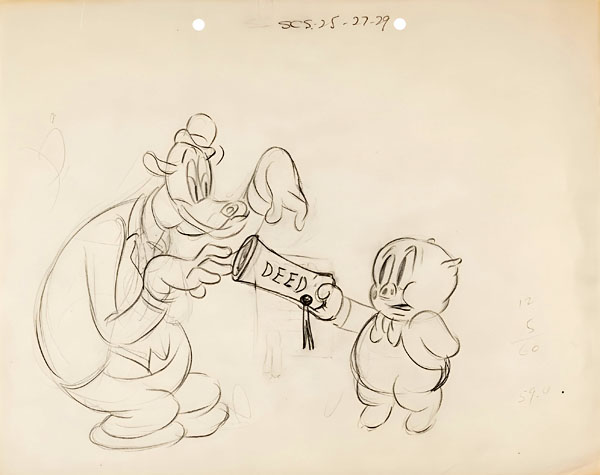
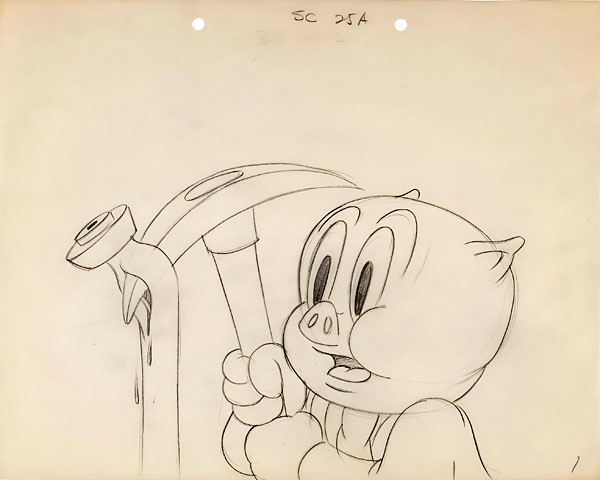
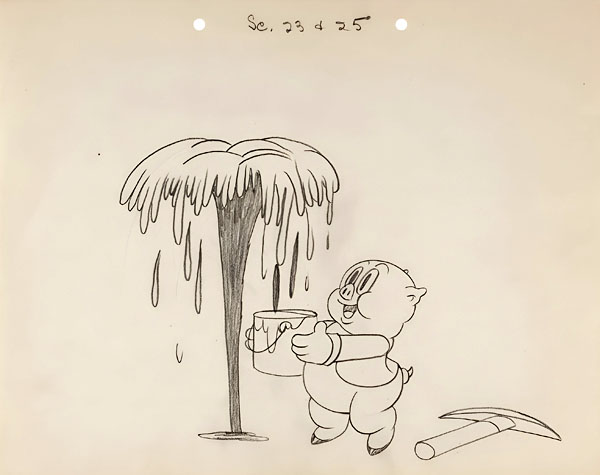
The production draft also reveals a few excised scenes during Honest John’s spiel to Porky and Gabby; Porky exclaims, “Banana oil!” in scene 11, undoubtedly a reference to Milt Gross’s comic strip from the late 1920s and early ‘30s. Scene 12 is listed as “makes take”—perhaps Honest John demonstrated a banana secreting black oil, much to Porky’s astonishment. Scene 15 is listed as “opportunity,” but the following description in scene 16 is hard to decipher. Two surviving layout drawings of Scene 15 show Porky and Gabby looking at screen left, then at screen right, with their hands to their ears. This might suggest a response to an off-screen exchange from Honest John in which he tells the boys, “Opportunity is calling.”
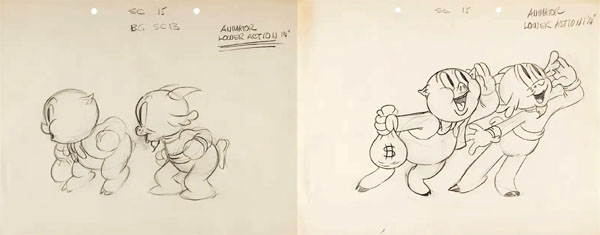

These original story sketches with Porky and Gabby suggest a different finale than the finished film: Gabby emerges from underground, still clasped onto the jackhammer; his body quivers in the same action when he walks with Porky screen left.
Carl Stalling’s musical score in Get Rich uses several effective leitmotifs throughout the cartoon. The opening title shows a sign, with Dave Franklin and Cliff Friend’s “When My Dreamboat Comes Home” as the underscore, indicating the potential riches offered to Porky. After the title fades out, “Dreamboat” seamlessly moves to Al Dubin and Harry Warren’s “With Plenty of Money and You,” introduced in Gold Diggers of 1937, revealing the signage of the get-rich-quick scheme manufactured by Honest John Gusher. The hound’s attempts in burying his newfound bone are accompanied by a J. S. Zamecnik cue entitled “Queer Antics,” a 1927 “mood music” composition for silent movies. Bert Kalmar and Harry Ruby’s “She Was an Acrobat’s Daughter,” from the 1935 Warners feature Bright Lights, plays during scenes of the gopher’s magic tricks. Finally, when Gabby strikes natural oil from the ground and a gusher erupts, Stalling implements the notable Depression-era song: “The Gold Diggers’ Song (We’re in the Money),” which originated from Gold Diggers of 1933.
Released August 28, 1937, Get Rich Quick Porky was the last cartoon to pair Porky Pig and Gabby Goat. Given Clampett’s dislike for the character, it seems telling that Gabby and his prickly demeanor are absent from the action for much of the cartoon, as he burrows himself beneath solid ground by jackhammer. Consequently, Porky was, at first, a solo character in the earlier Looney Tunes of Clampett’s first season as a director until a black, screwy duck became more prominent in the Schlesinger cartoons and a key fixture in Porky’s films.
Mark Kausler’s photocopy of the animator draft was previously used for Cartoon Research in March 2015; here is a much sharper scan of the original from the Clampett estate.
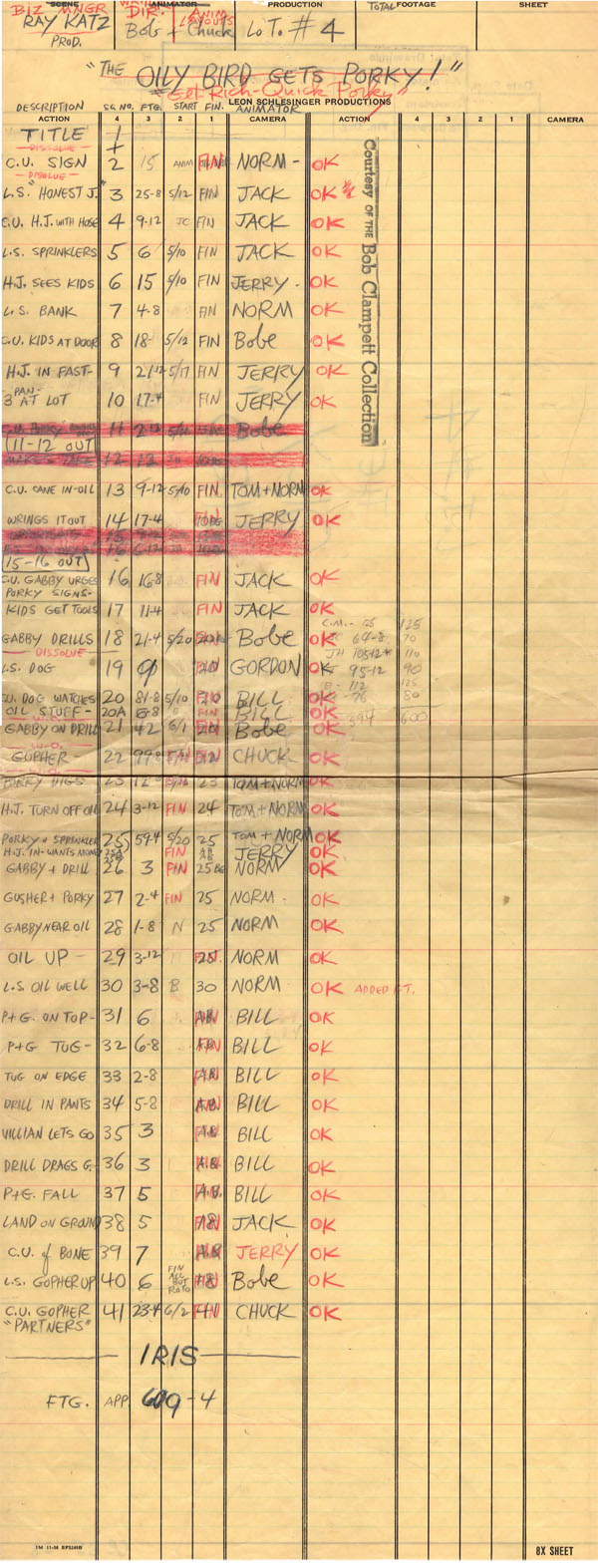
Thanks to Jerry Beck, Ruth Clampett, Michael Barrier, Milt Gray, Keith Scott, and Frank M. Young for the production materials and information used in this text.
